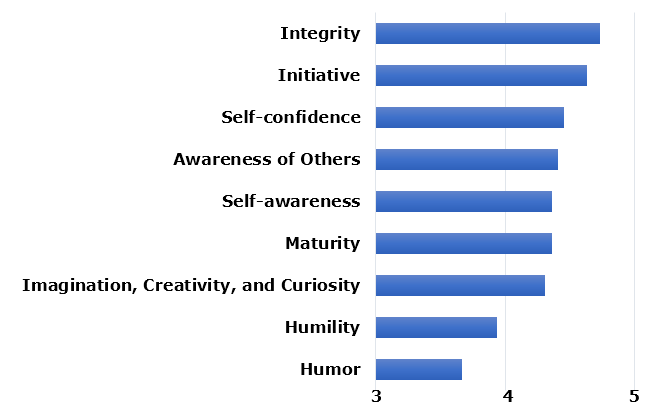
By Professor Boris Groysberg of Harvard Business School
and Susan Seligson.
The British innovation strategist and author Max McKeown observed that “all failure is failure to adapt, all success is successful adaptation.” Those words could serve as a mantra for executives and companies seeking to stay relevant in a swiftly evolving global marketplace.
Executive Summary
When it comes to leading change, it’s crucial to possess adaptability, foresight, and the ability to maintain a competitive edge without sacrificing the loyalty and trust of colleagues, board members, and subordinates.
Along with adaptability, successful transformation demands clarity, finesse and over communication to fight the resistance to change inherent to human nature.
1. Methodology
2. Flexibility, Sensitivity, Clarity and Fairness
3. Control your emotions
4. Transformation initiatives mostly fail
5. Super flexibility
6. Timing and pacing
7. Endorsements
8. Over communicate
9. Fight uncertainty
Print or Save in PDF
1. Methodology
Our sweeping survey in partnership with The Official Board drew responses from 7,160 executives in nations around the world. We supplemented survey data with in-depth interviews of at least 50 executives. Of those surveyed, 35% are based in the U.S., and the other 65% in more than 100 nations in North America, Europe, Asia, and Africa.
The data reflect responses from executives in 50 internal departments and 90 industries, with an average of 19 years of experience preceding their current leadership positions.
In our respondents’ ranking of important leadership skills from verbal communication, a crucial element in leading change, led the skills along with listening and interpersonal skills with subordinates and colleagues. These were closely followed by analytical thinking, interpersonal skills with superiors, teamwork, writing, and quantitative aptitude.
Please rate the importance of having the following skills in your position. Response above represent the average response across all individuals surveyed
Response above represent the average response across all individuals surveyed
on scale of 1 to 5.
2. Flexibility, Sensitivity, Clarity and Fairness
Nearly 200 also specifically mentioned the ability to adapt and “be flexible” – essential to both leading and adjusting to company changes from reorganization to re-branding. To stay relevant and effective, respondents agreed, an executive must always be open to, and embrace change.
Respondents cited the importance of being open to new ways of doing things, keep subordinates as informed as possible, and instituting cultural and human resources shifts with sensitivity, clarity, and fairness.
We also surveyed the importance of traits among executives, who rated integrity most important followed by initiative, self-confidence, awareness of others, self-awareness, and maturity. Other important traits included imagination, creativity, curiosity, humility, and humor.
Please rate the importance of having the following traits in your position. Response above represent the average response across all individuals surveyed
Response above represent the average response across all individuals surveyed
on scale of 1 to 5.
When leading change, several executives agreed, character traits such as awareness and empathy (“humanity,” as one put it) help ease organizational transitions and personnel shifts.
3. Control your emotions
When it comes to staying relevant, these winning personality traits and interpersonal soft skills are viewed as increasingly important by executives in a range of positions from the financial to the creative sides.
Jan Bruce weighs in on this crucial management trend in a 2017 article in Forbes: “What’s the formula for building a company that can not only withstand the climates of change and uncertainty we’re living in, but transform and innovate? It used to be that the formula was to build a team that had the technical expertise and work experience to execute on ‘the plan.’ Now,” writes Bruce, “a major coalition of businesses, policy experts, trade groups, and academics are demonstrating that soft skills—specifically interpersonal skills, the ability to manage and control your emotions, communication skills, leadership, adaptability, and problem solving—are critical.”
With company restructuring, stepped up globalization, acquisitions and mergers, employee outsourcing, and other changes, executives must oversee difficult shifts in personnel and realignments of responsibilities that are likely to affect the lives of longtime, loyal employees.
This requires confidence, interpersonal dexterity, and strategic finesse. One Norwegian executive stressed the importance of open communication:
“I don’t think you can overcome resistance to change. When no information is possible to give, then we also communicate that. The aim is to reduce the uncertainty as much as possible. What you can do is being a responsible and true leader and manager, always preparing and coaching the organization to handle change in all forms.”
4. Transformation initiatives mostly fail
Leading change is among one of the most important and urgent concerns affecting thousands of executives in today’s volatile business world. For example, a January, 2018 report by global outplacement consultancy and executive coaching firm Challenger, Gray & Christmas, Inc. found that the number of CEOs leaving their posts at U.S.-based companies in the previous month reached 132, the highest monthly total since February 2010.
According to the global consulting firm Deloitte, corporate and private equity executives foresee an acceleration of merger and acquisition activity in 2018, both in the number of deals and the size of the transactions. Their survey of 1,000 executives the firm notes that:
“Respondents from larger organizations—both on the corporate side and the private equity side—anticipate doing more deals in the next 12 months than they did in the past year. More than a third (35 percent) of corporations with revenue in excess of $1 billion intend to pick up the pace on acquisitions, compared with 22 percent of smaller companies. At private equity firms investing more than $1 billion, 29 percent expect deal activity to step up significantly in the year ahead, compared with 12 percent among their smaller counterparts.”
Yet, as John P. Kotter observed in the May-June 1995 issue of Harvard Business Review, most major change initiatives, “whether intended to boost quality, improve culture, or reverse a corporate death spiral – generate only lukewarm results.” And a large number “fail miserably,” he adds.
In his prescription for successful transformation, Kotter, Konosuke Matsushita Professor of Leadership, Emeritus, at the Harvard Business School and author of the bestseller Leading Change, enumerates likely pitfalls and offers pointers for avoiding the, including “using every vehicle possible” to communicate new visions, encouraging risk taking and “non-traditional ideas and actions,” empowering and rewarding exemplary employees, forming a powerful “guiding coalition,” and, perhaps most important, establishing a sense of urgency.
According to Kotter’s The Idea in Practice, Summary, to enact successful change, executives must “convince at least 75 percent” of their managers that “the status quo is more dangerous than the unknown.”
5. Super flexibility
Leading change demands a healthy mix of the skills and character traits we surveyed, along with what Homa Bahrami, a consultant to developing industry leaders at the Berkeley Center for Executive Education, calls “super flexibility.” In a July 2015 blog entry on www.executive.berkeley.edu on the subject she enumerates the themes that super flexibility entails:
- Agility, the ability to be fast and move quickly to seize opportunities or side-step threat;
- Versatility, the ability to wear different hats and switch gears depending on the context and the situation;
- Hedging, the ability to plan ahead, hedge your bets, and think through different contingencies and scenarios;
- Robustness, the ability to have clear intentions, absorb shocks, be persistent, and remain viable;
- Resilience, the ability to bounce back and recover from setbacks.
6. Timing and pacing
In leading change, not only timing, but pacing is crucial. Proceeding too quickly can take a toll in confusion and resentment throughout the organization. Several executives cautioned against springing changes on the unsuspecting. As one executive noted,
“In general, the feedback I have been given is that people appreciate honesty. When given orders to hold back, or when the organization has not been aligned in larger change processes, then the conflicts have been more apparent.”
Another executive put it this way when emphasizing the need for openness as well as foresight when leading change:
“I usually say, the change will come, so either we meet the change with our back first or we meet it face front. Then at least we have a chance to see what is coming. The more insecure the people and the organization are, and the least prepared it is, the weaker the ability to handle any change.”
7. Endorsements
A clear plan is key, said one executive. Leading change requires a straightforward plan to execute, having all stakeholders on board and gaining their endorsement. And stakeholders must be made to see that in most cases change is not just preferable, but essential, one executive commented:
“How to gain support for a change initiative and generate buy-in from others in your organization? For us it was a company issue affecting two main areas, retail and HR, that ignited different changes. In both cases, what helped the most was showing a clear, irrefutable view of the as-is situation as no longer tenable.”
One executive underscored the importance of having a really good board of directors that has good management succession perceptions, perspective, and an understanding of the seriousness of deftly executed change. When it comes to, say, replacing a CEO, says an executive who oversees compliance:
“Sometimes it’s not because the CEO has done anything wrong. Sometimes it’s just time for a change — either changing the direction of the company or making needed improvements. And it takes a team approach, including the board of directors and outside counsel. If there has been wrongdoing, the investigation needs to be done appropriately and professionally and clearly and documented well.”
What challenges do executives face if staying relevant requires delicate initiatives such as personnel downsizing, or the termination of fellow executives? This, says a respondent who is a chief legal officer, embodies the need for many of the survey’s highest-ranked traits, including personal integrity, maturity, and self-awareness.
“I have facilitated the departure of maybe five or six chief executive officers as the lawyer for the company. That’s probably the most significant, most impacting, and widely touching kind of change in an organization. And that requires real finesse with respect to maintaining the respect and dignity of the person that’s outgoing, maintaining real transparency with the board of directors, making sure that every single I is dotted, and every single T is crossed in terms of the steps that are taken. These kinds of organizational changes affect people’s lives, and you have to be sensitive to that.”
8. Over communicate
Executives agreed that it’s crucial to define a clear strategy for change, and as Kotter puts it in HBR (p.2), be sure to “articulate connections between new behaviors and corporate success,” One survey respondent, who managed many change initiatives for a global company, offered a pointed metaphor for the way in which a poorly executed change can backfire and cost a company its best people:
“Part of it is that you need to put a plan together early. For a deep organizational change, to do it like the death by a thousand paper cuts – to do a little bit, little bit, little bit – is a killer, from an organizational perspective. You just get into a death spiral. Your best people start seeing it and those are the ones that you need to get you successfully to the other side. But if they can see they’re in a death spiral, they’re also the most likely to seek positions elsewhere.”
The executive added that if the change is going to involve personnel changes, it is important to make those changes “very transparently and very up front. If it’s going to require a layoff or a reduction in force, you want to do that all as fast as you can up front. People can deal with facts really well.”
As for the “stayers,” as the executive referred to them, successfully leading change demands that the company generates excitement about the transformation and the opportunities it affords them. This is a major challenge when “they just saw colleagues who are friends, and other people they socialize with leave,” he said. To sustain the stayers’ loyalty and enthusiasm, a lot of communication is required. “It’s almost impossible to over-communicate during that time,” he adds.
9. Fight uncertainty
Resistance to change is human nature. As an executive at a technology firm put it, there’s a prevailing sentiment among executives that, “I’m doing it right. Everyone else is doing it wrong. Yes, we need a change. But they need to change.”
A big part of leading change efficiently, he says, is to convince all the players that not only is change necessary, but that they must all contribute to it.
“Before we did anything major the first thing was to go around and meet with all the stakeholders and explain to them what this change was going to do for them,” said the chief executive of a major beverage company.
For this company, change was going to save costs, and provide better, more challenging careers for the people involved in it.
One universal challenge is to use sensitivity, clear communication, and finesse when informing people of impending changes to their teams.
When it comes to change, as the Norwegian executive observed,
“You never get used to the uncertainty of the unknown, but you can learn to handle and own it by working on a result-driven culture based on openness, curiosity, and learning. Being good and always striving to be better is part of handling change, because you and you team are strong and focused.”